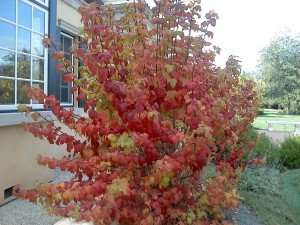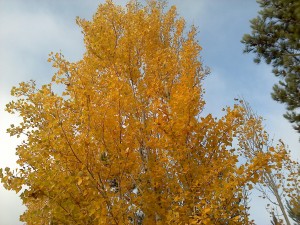Autumn Colors in Santa Barbara
The bustling sound of Santa Barbara’s children returning to school has the staff at Down to Earth Landscapes yearning for the beginning of autumn colors. Although the autumnal season does not technically begin until Saturday, September 22, 2012, the signs of our favorite season begin early here in Santa Barbara County.
Many transplants to the area will say that there is no such thing as autumn colors in Southern California and especially Santa Barbara, but natives know that you can feel changes in the environment, including temperature, the angles of the shadows, and the smells in the air, as early as August.
We’ve been feeling those changes this week, which naturally made us think about autumn leaf colors. Those spectacular oranges, reds, and yellows are often considered out of reach here on the central coast. But that is not necessarily true. It is possible to have fall color in Santa Barbara.
What causes the leaves to change their color?
Trees that lose their leaves during the colder months of the year are known as deciduous. Deciduous means, “falling off at maturity”. Natural chemical changes in the leaves occur over the course of the year as the leaves move from birth to death in a cycle that becomes a physical reminder for all the cycles of life on our planet.
During the autumn season, chlorophyll pigments begin to complete their role in plant nutrition. It is the chlorophyll in the leaves that causes the green pigment.
As this synthesis ends, other kinds of pigments become dominant. The most common pigments responsible for fall color are known as xanthophylis, carotenes and anthocyanin. These pigments are responsible for shades of yellow (xanthophylis and carotenes) and red/blue/purple (anthocyanin). The presence of these pigments determines the color of each tree’s autumnal leaves.
Planting Autumn Color in Santa Barbara
In order to get the desired Fall color effect in your garden, it is necessary for you to know the chemical make-up of the trees you want to plant.
The following trees contain the xanthophylis that will make your garden turn that coveted autumnal yellow:
- Ash
- Birch
- Cottonwood
- Cercis (Western Redbud)
- Ginkgo
- Modesto Ash
- Poplar
- Willow
The red color in autumn leaves is affected by both weather and the chemical compounds naturally found in the plant material. Some, such as Liquid Amber and Sugar Maple, turn color because the cool, dry bright autumn weather facilitates the synthesis of anthocyanins in the leaves.
The following trees turn red due to their chemical/genetic make up. They simply lack the genes that turn leaves yellow and brown. They do not require cool evenings to turn red. In fact, in these trees the color might be adversely affected by cold weather:
- Chinese Pistachio
- Smoke Tree
- Sourwood
- Sweet Gum
Planting Recommendations for Autumn Color in Santa Barbara
All of the above types are ones that we know grow happily in Santa Barbara. The trick for color in Santa Barbara is rooted in two things:
- Plant choice
- Patience.
If you plant trees like the Chinese Pistachio or Liquid Amber, you can expect color at the same time every year without fail. If you plant trees that are affected by the weather, such as the Ash, you will simply need to wait until the weather changes. Some years your trees will turn as early as September, and some years they will still be turning color at the beginning of the New Year.
Either way, with proper care your color will be spectacular. Send us your favorite photos of autumn colors in Santa Barbara and will post in on our blog.
Do you want to learn more about how to create autumn color in your Santa Barbara garden?
Call our Down to Earth Landscapes here in Santa Barbara today. We’ll be happy to talk to you more and help you create autumn color in your garden.







